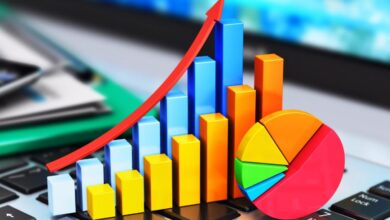
Important Facts Every Trader Should Know About Trading Indices and Metals on Forex Sites
Ample opportunities in the global market include trading instruments such as indices and metals. The assets, along with their peculiarities, are essential in the acquaintance of a trader to make most of the viable options within the trading cycle. The article explores some of the key facts on the trading of these assets that a trader should know well before diving into the markets with confidence.
Why Indices and Metals Attract Traders
Forex trading for beginners often includes exploring indices and metals due to their unique advantages. Apart from that, with the help of indices, one can trace the performance of entire markets: Gold and Silver represent commodities that are considered safe havens during periods of uncertainty. These instruments give traders an avenue to spread risks and profit from different market conditions.
1. The Basics of Trading Indices and Metals
Understanding these instruments is the viable next step for forex learners. An index represents a performance of several stocks and is normally associated with a particular region or sector, such as technology indices or the leading and performing stocks of a country. The trading of indices offers investors an opportunity to speculate on the overall market trends and not on individual companies.
On the other hand, metals are commodities with value in themselves. Gold, silver, and platinum have been tried as currencies and modes of investment for centuries. That is perhaps why many traders run towards them to hedge against inflation or any form of economic slowdown. Both instruments are available through contracts for difference on many trading platforms. They certainly offer flexibility without requiring ownership of the underlying assets.
2. How Volatility Impacts Indices and Metals
Volatility is the most important factor in the trading of the indices and metals. Global events, earnings seasons, and geopolitical changes can impact the volatility of the price of different indices. Political change or even a shift in the economic policy may lead to violent up and down movements of an index.
The metals are also influenced by outer factors. Gold usually rises during economic uncertainty, as investors look for refuge. On the other side, industrial resources like silver and platinum are more driven by manufacturing demand and economic growth. In order for a trader to stay one step ahead of such movements, they should be up-to-date on news around the world and corresponding economic reports. A sound risk management plan can cushion the impact of such sudden market turns.
3. The Role of Leverage in Indices and Metals Trading
Leverage is a common tool in trading, allowing traders to open larger positions with smaller capital. While leverage can boost profits, it also heightens the risk of substantial losses. Learning to use it wisely is essential for lasting success.
A good practice is to determine the appropriate level of leverage based on experience and risk tolerance. Beginner traders should start with lower leverage to minimise exposure while learning how the market behaves. Over time, they can adjust their approach as they gain confidence and expertise.
4. Key Factors That Drive Prices of Market Benchmarks and Precious Commodities
Several factors influence the price movements of indices and metals. For indices, these include:
Global Events: Political instability, trade wars, or pandemics can affect entire economic and trade markets.
Economic Indicators: Reports on GDP, unemployment rates, and inflation impact market sentiment.
Corporate Performance: Quarterly earnings from companies in an index can push prices up or down.
For commodities, price drivers are slightly different:
Currency Strength: A weaker currency often leads to higher metal prices, especially for gold.
Geopolitical Tensions: These assets thrive as safe-haven assets during conflicts or economic instability.
Supply and Demand: Limited supply and increasing demand for industrial use affect prices, particularly for silver and platinum.
Staying informed about these factors helps traders make data-driven decisions when entering or exiting positions. A reliable trading site can always guide or warn traders or investors regarding such matters.
5. Crafting a Strategy for Trading Benchmarks and Commodities
Having a strategy is essential when trading these instruments. A comprehensive plan should include clear entry and exit points, risk management rules, and a deep understanding of market behaviour. For indices, traders often use technical analysis to identify trends and momentum. Observing price charts, moving averages, and support and resistance levels can provide insights into potential movements.
For metals, fundamental analysis plays a crucial role. Understanding global supply and demand dynamics, interest rate changes, and geopolitical news can help traders anticipate price shifts. Combining this with technical analysis ensures a balanced approach.
New traders can benefit from practising these strategies on demo accounts provided by authentic and reliable trading platforms. This allows them to gain hands-on experience without risking real money. Additionally, using tools like stop-loss orders and position sizing helps manage risks effectively.
Final Words
Adding these instruments to the Forex learning curve for beginners will further expand the learning process. These assets hold unique diversification and risk management benefits. Their characteristics, volatility, and price drivers-known to the trader-enable him or her to create robust strategies that befit his or her goals. A mix of technical and fundamental analysis, together with careful planning, is the path to regular success in those markets. Assistance can also be sought in favor of traders and investors from a number of renowned and authentic trading websites. If one can learn constantly with their continuous disciplined execution, then traders can confidently sail through these dynamic markets and maximize rewards.



